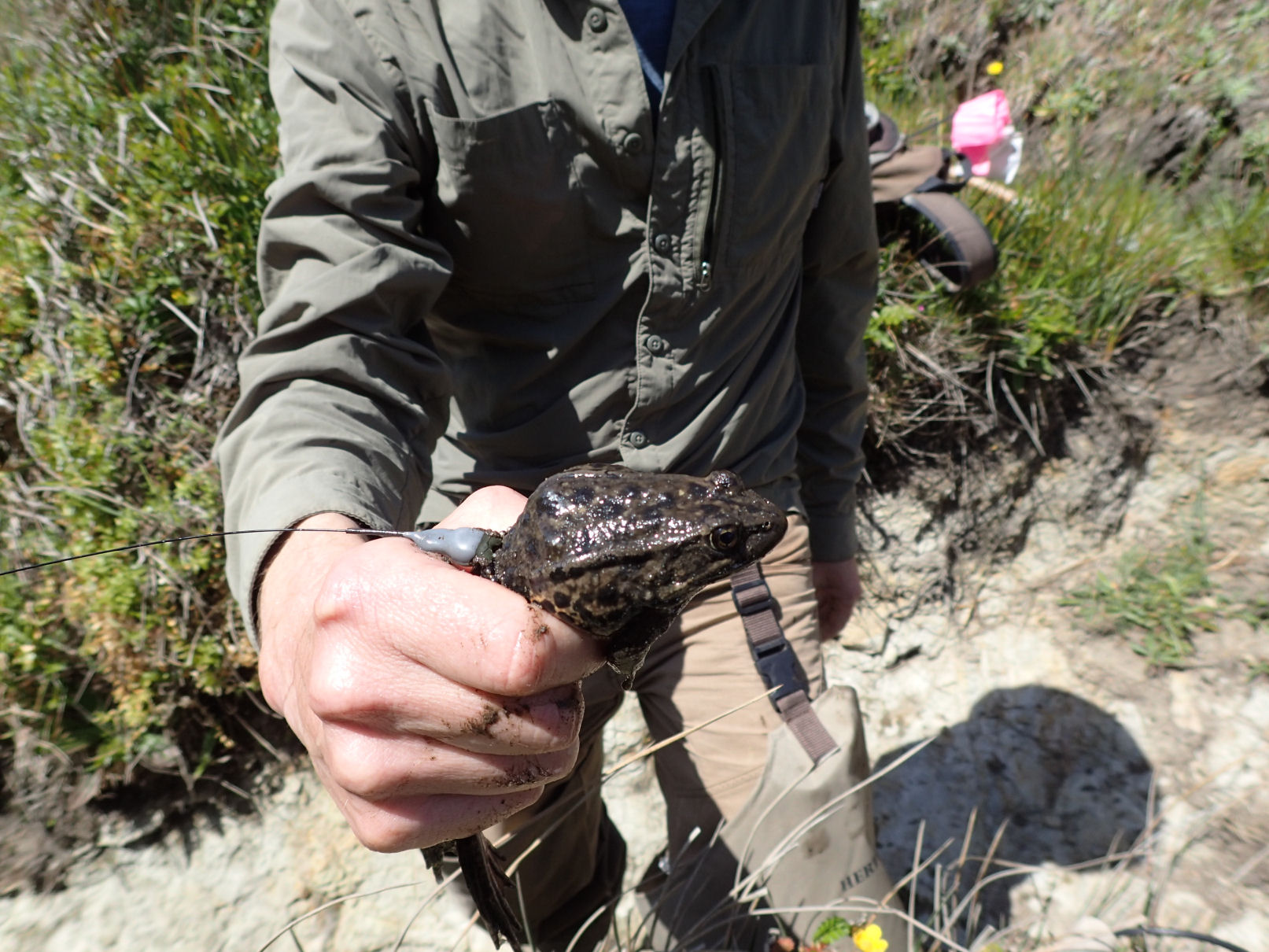Frogs on the Beach: Ecology of California Red-Legged Frogs (Rana draytonii) in Coastal Dune Drainages
Abstract/Summary
California Red-legged Frogs (Rana draytonii) are typically regarded as inhabitants of permanent ponds, marshes, and slow-moving streams, but their ecology in other habitats, such as drainages among coastal dunes, remains obscure. Because coastal dune ecosystems have been degraded by development, off-highway vehicle use, stabilization, and invasive species, these unique ecosystems are the focus of restoration efforts. To better understand the ecology of California Red-legged Frogs in coastal dune ecosystems and to avoid and minimize potential negative effects of dune restoration activities on these rare frogs, we studied their spatial ecology, habitat selection, and survival in coastal dune drainages at Point Reyes National Seashore, California, USA. All 22 radio-marked frogs remained in their home drainages throughout the spring and summer of 2015 and, with some notable exceptions, most remained close to water. Local convex hull home ranges of four out of five California Red-legged Frogs with > 20 observations in dunes were < 1,600 m2. At the population level, frogs were 1.7 (1.2-4.4) times more likely to select sites 1 m closer to water, and were 83 (2.0-17,000) times more likely to select sites with 10% greater percent cover of logs that served as refuges from environmental extremes and predators. On average, California Red-legged Frogs avoided the invasive plants Iceplant (Carpobrotus edulis) and European Beachgrass (Ammophila arenaria). Frogs were https://0.68 (0.32-0.89) and https://0.55 (0.24-0.75) times as likely to select areas that had 10% greater cover of these plants, respectively. Assuming constant risk of mortality, California Red-legged Frogs had an annual survival rate of https://0.70 (range, 0.27-0.96) in coastal dune drainages. This relatively high survival rate suggests that coastal dune drainages provide a locally important habitat for California Red-legged Frogs. Restoration practices that maintain wetted drainages with logjams are likely to benefit California Red-legged Frogs.
Publication details
| Published Date: | 2017-04-30 |
| Outlet/Publisher: | Herpetological Conservation and Biology 12:127–140 |
| Media Format: |
ARMI Organizational Units:
Southwest, Northern California - BiologyTopics:
Invasive SpeciesSpecies and their Ecology
Place Names:
CaliforniaPoint Reyes National Seashore
Keywords:
amphibiansbehavior
ecology
habitat use
invasives
movement
stream
threatened species

